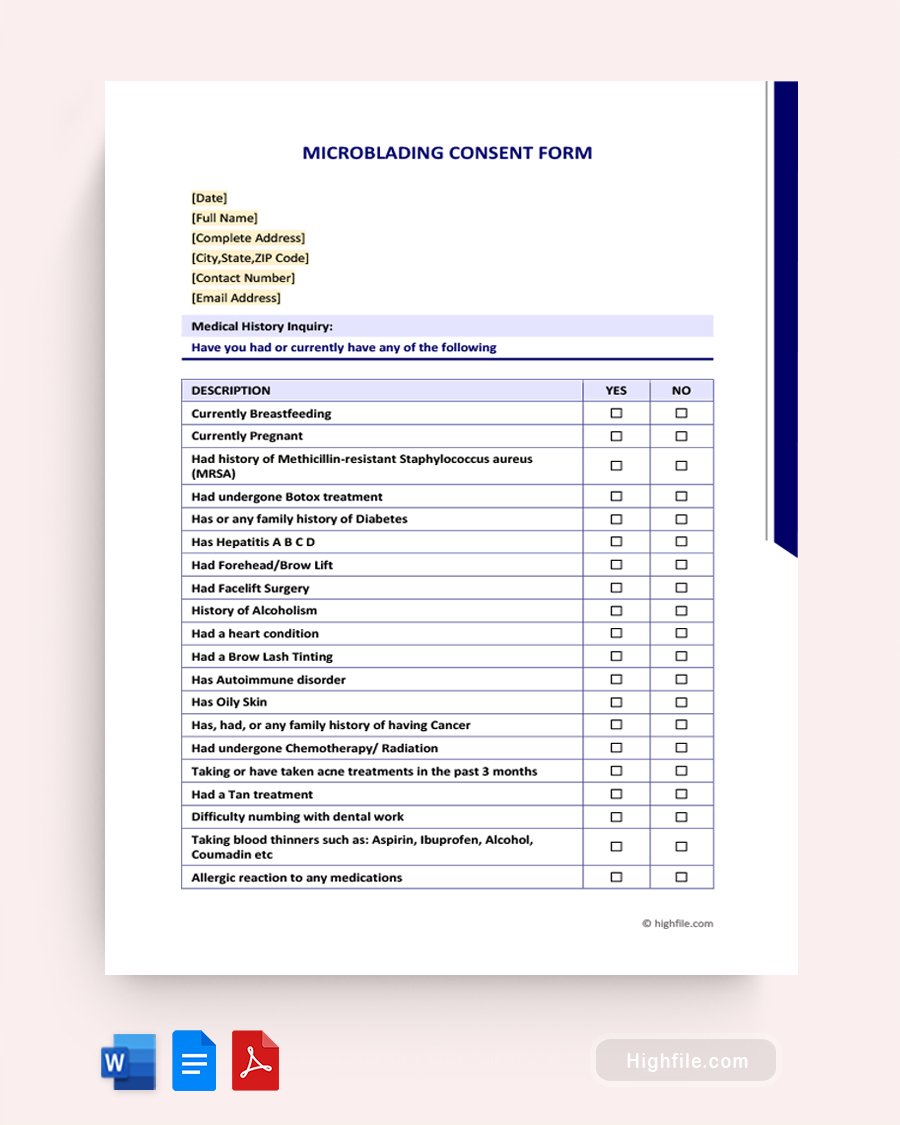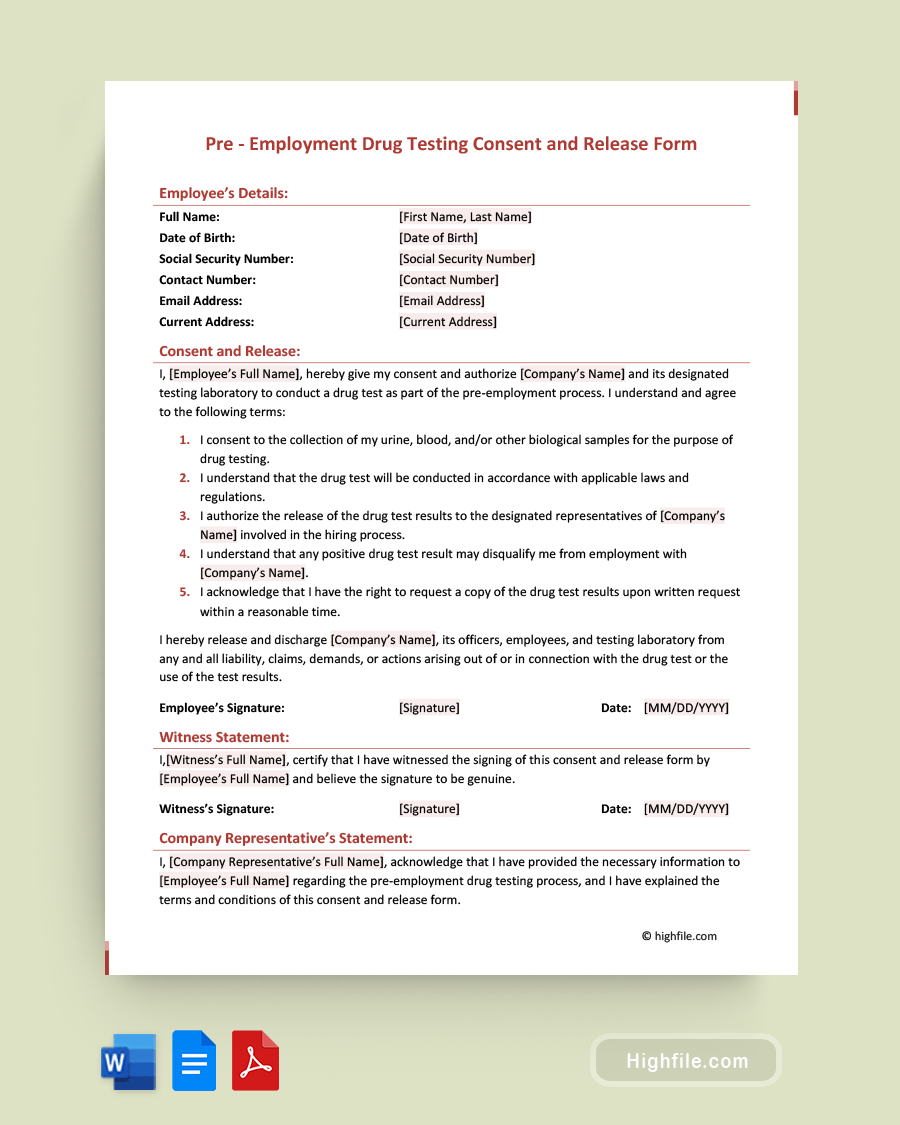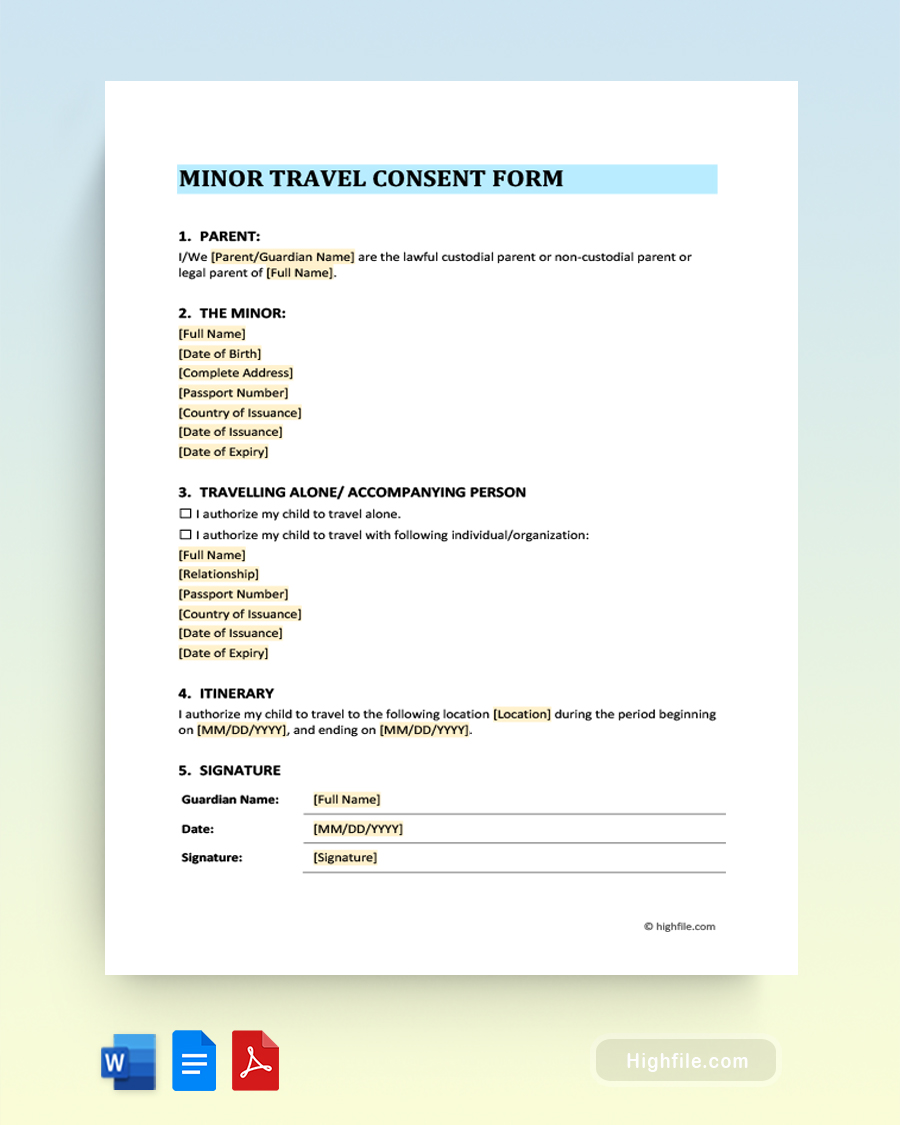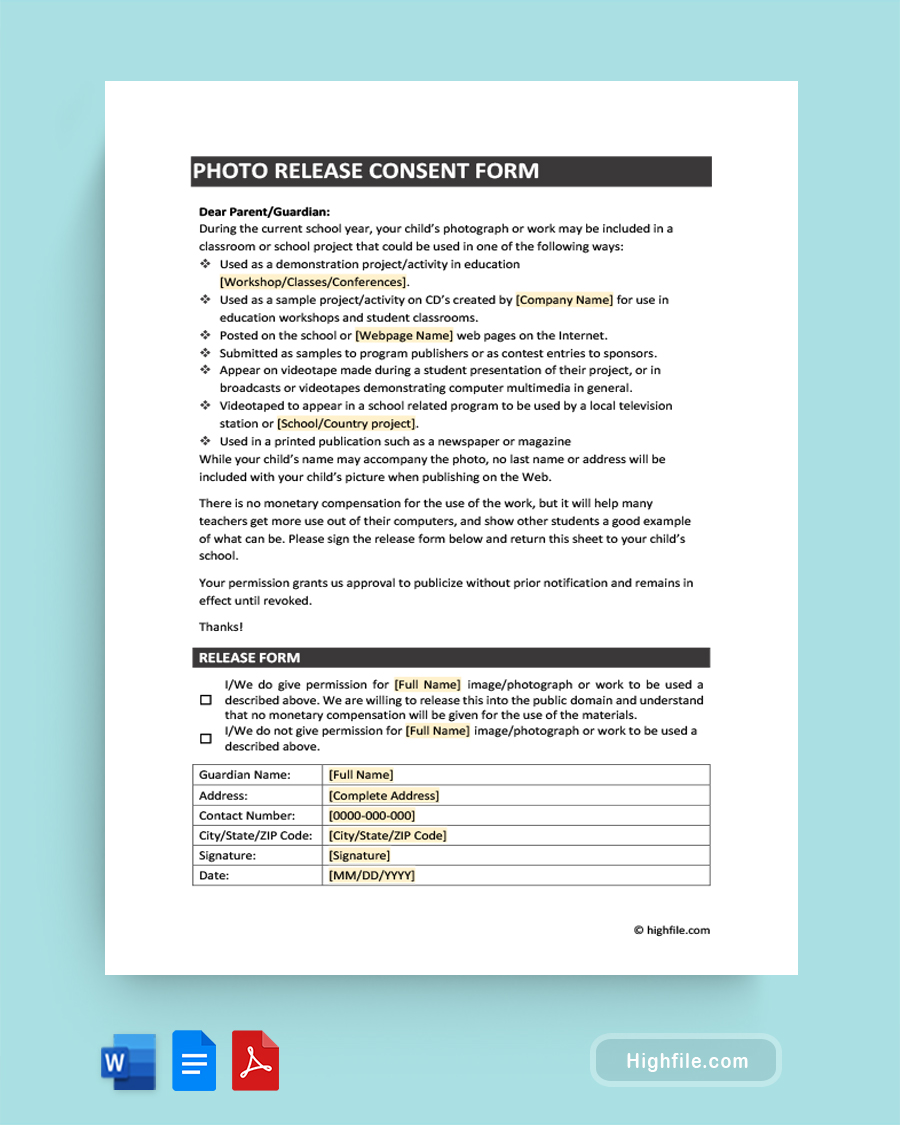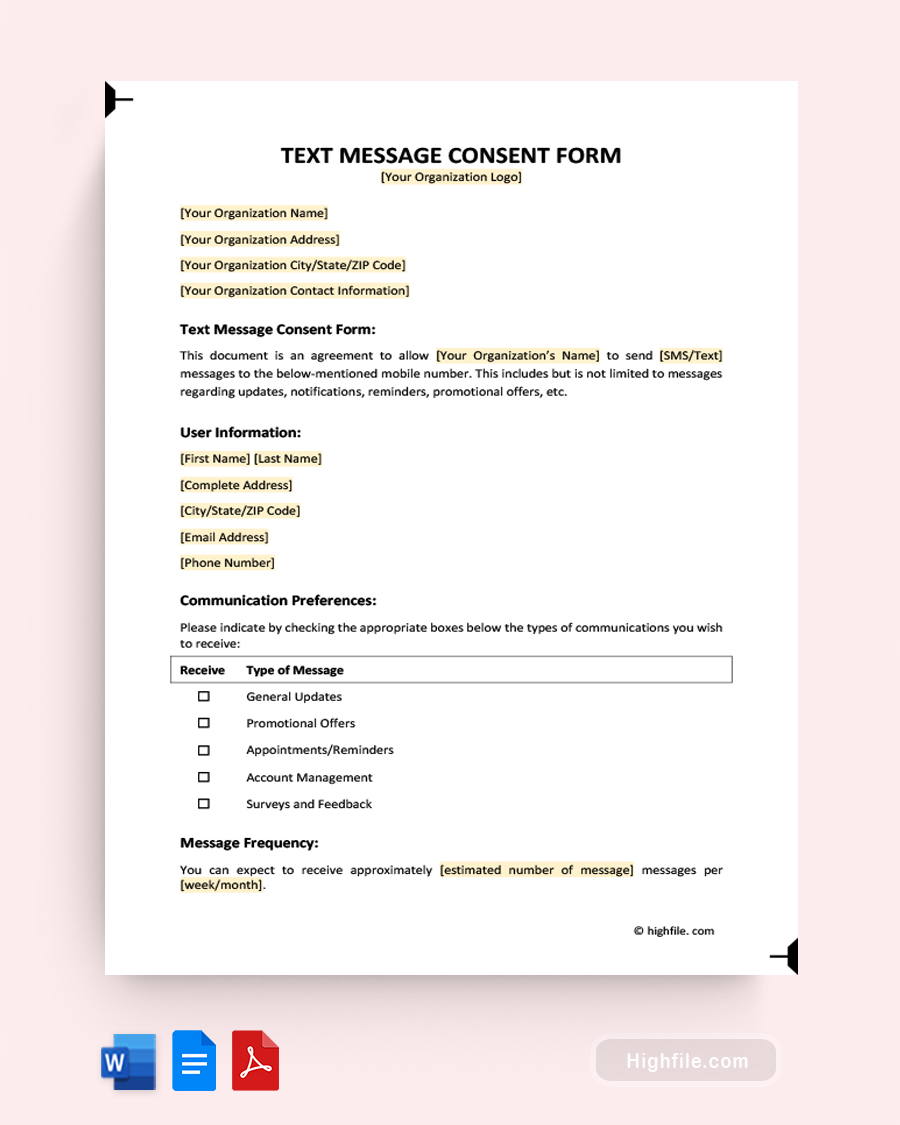Microblading is a cosmetic procedure that creates the illusion of an eyebrow through the careful, precise application of subdermal ink. Professionals who offer this service don’t typically call it a tattoo, and this style of tattoo doesn’t last a lifetime. Instead, it remains viable for one to three years, which makes eyebrows full and low maintenance, but it also requires reapplication. Whether it’s a client’s first time or a touch-up, we recommend using a premade template for all your microblading consent forms. Our easy-to-use, downloadable template can be customized in MS Word, PDF, and Google Docs. Best of all, since it’s reusable, you save time on paperwork and spend more on giving your clients the brows they want.
What Is a Microblading Consent Form?
A microblading consent form is a simple legal document that shows the client wants the treatment and understands what it entails. Having these signed forms on hand can help protect a business or technician from false litigation and demonstrates that every client has the proper information and opportunities to ask questions before voluntarily consenting to the procedure. Plus, a high-quality consent form template saves time and ensures you have all the relevant details recorded for your files.
Why Microblading Consent Form is Important
A microblading consent form fulfills several critical purposes. We’ve created a list below to show why you should always have and use these unique documents when a client asks for this aesthetic treatment. The five items on this list are the most important reasons to have every client fill out their consent form before anyone touches their skin for a microblading treatment.
- Most states in the US require the technician to have a license. Although some states require tattoo licenses, others ask for a cosmetology license or other certification. Regardless, this form shows where the treatment was performed and the technician’s name so you can easily verify the procedure was legal.
- Informed consent is required for most forms of beauty treatment. Since proving that you got verbal consent is tough, a microblading consent form offers written documentation and helps protect against litigation.
- Having clients fill out a consent form helps foster trust and shows that a business is operating professionally.
- Although complications are uncommon, they can happen, and failure to perform proper aftercare is one of the most likely culprits. Having a microblading consent form shows that the client understood their role in pre and post-treatment care.
- It isn’t very common for a business to be audited by the IRS, but having simple consent forms for treatments such as microblading helps create a paper trail showing how many of these procedures were performed and can become part of the evidence chain to show profits, losses and how much business is being done.
Essential Elements of Microblading Consent Form
Our professionally created microblading consent forms have spaces for all the relevant information you need to collect. Here we’ve outlined the process for creating these forms, including all the essential elements in the order they typically appear on the page. Feel free to bookmark this page and use it as a reference for customizing your forms.
- (Optional but Strongly Recommended) Logo or Business Name- Business logos are a big part of your business’ brand. Having a simple, identifiable, and unique logo image on all your documents makes them look more professional and helps clients remember and think of you more often. If you don’t already have a logo, we recommend creating one using Canva or hiring a professional on a freelance site like Fiverr.
- Title- Putting the document’s title in large, bold print at the top of the page clarifies what the client is reading and signing. Moreover, it also helps you find physical paper files even if they’ve been misplaced in the wrong cabinet or folder.
- Date- The date at the top of your form shows when a client came in for treatment and can assist you in reconnecting with them in a timely manner for a secondary appointment.
- Name- Put the client’s full legal name below the date so you know at a glance whose form this is.
- Client Contact Information- You need your clients’ street address, phone number, and email address. This allows you to contact them again if necessary and helps demystify things if you happen to have two clients with the same or very similar names.
- (Optional) Reference and Advertising Information- Knowing how your clients came to find your particular business is very useful for anyone who pays to advertise. This section is entirely optional, but asking where a client learned about you will help you direct your focus toward more successful advertising streams.
- (Optional) Service Description- You may add a brief descriptive text explaining microblading and how it works. Placing this directly on the form shows that the client knows the service they are asking for.
- Medical Concerns or Skin Issues- Not every client is a good fit for microblading. It helps to ask them in advance about any potential tattoo ink allergies, metal allergies, and relevant skin issues such as overly oily skin.
- (Optional Recommended) Comfort and Accessibility- Modern businesses that provide care often opt to ask clients if they need comfort or accessibility options, such as a place to park a wheelchair.
- (Optional Recommended) Self-Care Information- List the clients’ obligations to proceed with self-care after the treatment. You may also want to have them take home a copy of this information.
- Statements of Acknowledgment- We recommend including statements of acknowledgment. These should be a simple one to two-sentence statements with checkboxes beside them to show the client knows their role in pre and post-treatment care, any risks or side effects, how the process works, they have read the whole consent sheet, given you the complete and correct information, asked any questions and wish to proceed.
- (Optional Recommended) Technician Name- The technician who performs the treatment prints their name and signs the form to ensure you know who worked on the client. This is not necessary if you are a solo operation.
- Signature Line- Signing the form is the last and most vital part. Have the client print and then hand sign their name unless you are making an e-form, in which case they’ll be typing it in.
- (Optional) Signature Date- Since you already have the date listed at the top of your form, putting it here is redundant, but it’s also a common practice.
Pro Tip: The more information you include on your form, the more professional it looks to clients. While you can certainly have a simplified form that says only who asked for the treatment, their contact information, the date, and their signature of consent, a complete form is always the better option.
FAQ
Microblading is a highly effective beauty treatment that improves the look of eyebrows. However, you probably have many more questions if you are a new service provider or a curious potential client. We’ve answered the most frequently asked questions from people who wanted to know about microblading consent to help you out.
Before a microblading appointment, the client should be apprised of how long it takes, typical side effects like pain and irritation, and all the things they need to do to ensure the process takes properly. Below is a list of things clients cannot do before the appointment.
ᐅ Do not put makeup or other lingering products on your skin on the day of the procedure.
ᐅ Do not tan or risk sunburn on the procedure’s day.
ᐅ You cannot take OTC products that thin your blood for 48 hours before the procedure. This includes, but is not limited to, ibuprofen, aspirin, and numerous supplements like fish oil, vitamin e, and niacin.
ᐅ Stop waxing, coloring, or tinting 72 hours before the appointment.
ᐅ Do not work out or do any activity that causes sweating on the day of the procedure or for the next 14 days.
There are two main culprits that cause microblading not to take correctly. First, if you don’t listen and adhere to the aftercare instructions, you could cause the ink not to take properly. Second, skin type significantly impacts how well this procedure works. Skin types that are excessively oily and have larger pores are more likely to reject the pigment.
Microblading takes anywhere from 30 minutes to two hours. Since the artist needs to consult with you during the process to ensure you get the correct shape and style you prefer, this slows down the application rate. Creating a fuller brow naturally takes a little longer than adding a thin or partial brow.
People who work out daily, spend all their time in the sun or otherwise do activities that lead to sweating or sun tanning and burning may find that microblading isn’t a good fit. Clients who take blood thinners may bleed excessively and are not optimal candidates. Moreover, this process may not be the best option if you have enlarged pores, scars in the area, or naturally oily skin.
It typically takes thirty to forty days to heal from microblading fully. Additionally, you should return in six weeks for a second appointment to ensure all the lines healed properly, and you’ll need to go in for annual retouches. Since the skin on your face and especially around your eyes moves more than other areas, much like work done on hands or feet, the cell turnover tends to fade brows faster than a traditional tattoo.
Microblading is a tattoo. Although the style and application are different than the more classic forms, it shouldn’t be any more or less painful. However, it is essential to note that facial skin has many nerve endings, and every individual has a different pain tolerance level, which will vary from one client to the next.
Yes, microblading eyebrows is considered cosmetic tattoo. Unlike a traditional tattoo, done with a tattoo machine, this form of tattoo is considered temporary and only lasts one to three years. This allows the client to change their eyebrow shape and style over time.
Final Thoughts
Microblading creates a beautiful aesthetic and tailored brow appearance that is no-maintenance and long-lasting. Although it is not permanent, it is considered a form of a tattoo. Ensuring your clients sign a consent form before a microblading treatment is essential. This shows that they understand how the process works and their self-care responsibilities and that they voluntarily consent to this process. The consent helps protect you and your business from litigation and should be the first step in every brow microblading process. Using a professional, preformatted template makes it easier and quicker to customize your forms and ensures you aren’t missing any crucial data.
